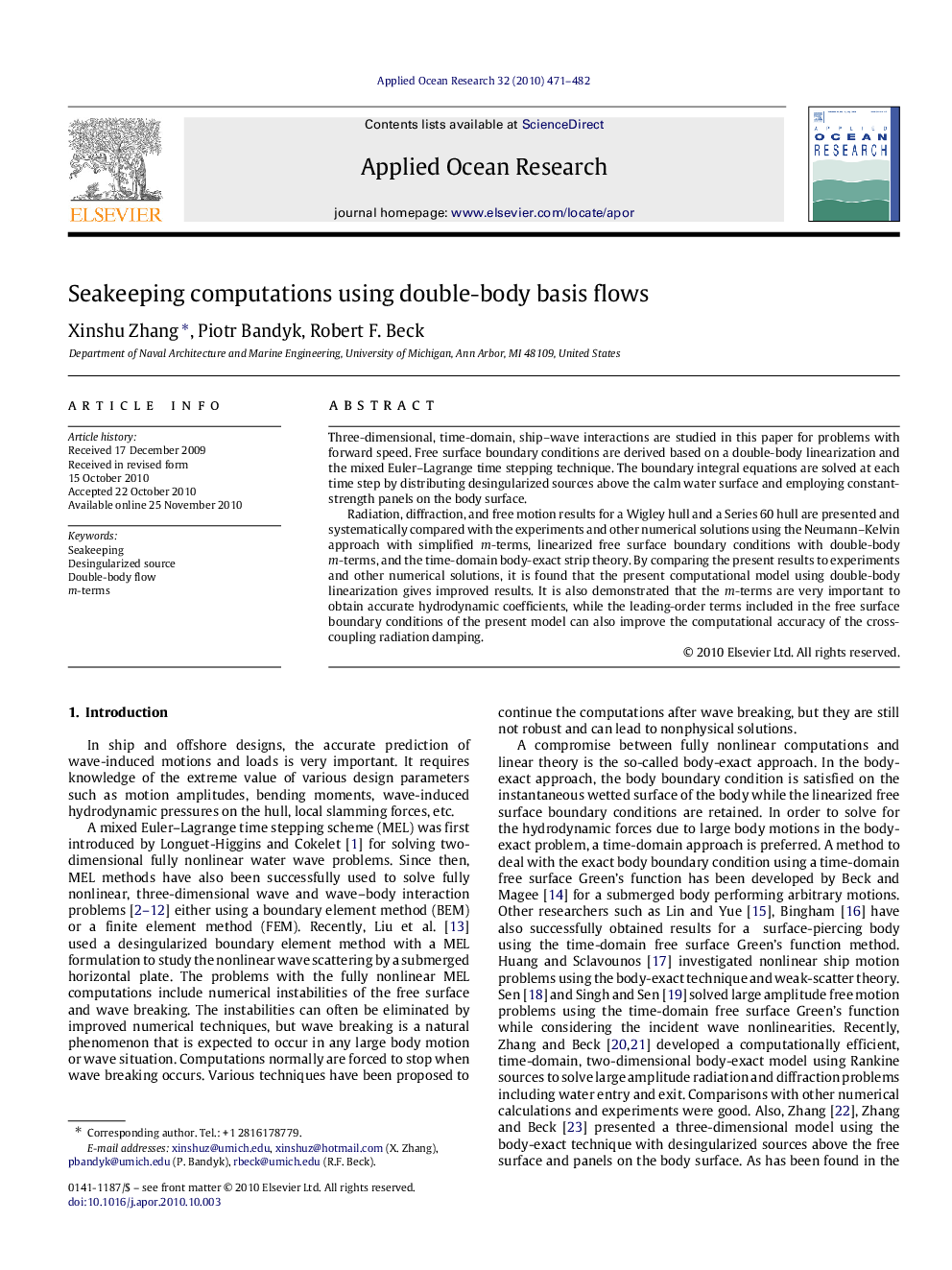| Article ID | Journal | Published Year | Pages | File Type |
|---|---|---|---|---|
| 1720269 | Applied Ocean Research | 2010 | 12 Pages |
Three-dimensional, time-domain, ship–wave interactions are studied in this paper for problems with forward speed. Free surface boundary conditions are derived based on a double-body linearization and the mixed Euler–Lagrange time stepping technique. The boundary integral equations are solved at each time step by distributing desingularized sources above the calm water surface and employing constant-strength panels on the body surface.Radiation, diffraction, and free motion results for a Wigley hull and a Series 60 hull are presented and systematically compared with the experiments and other numerical solutions using the Neumann–Kelvin approach with simplified mm-terms, linearized free surface boundary conditions with double-bodymm-terms, and the time-domain body-exact strip theory. By comparing the present results to experiments and other numerical solutions, it is found that the present computational model using double-body linearization gives improved results. It is also demonstrated that the mm-terms are very important to obtain accurate hydrodynamic coefficients, while the leading-order terms included in the free surface boundary conditions of the present model can also improve the computational accuracy of the cross-coupling radiation damping.
